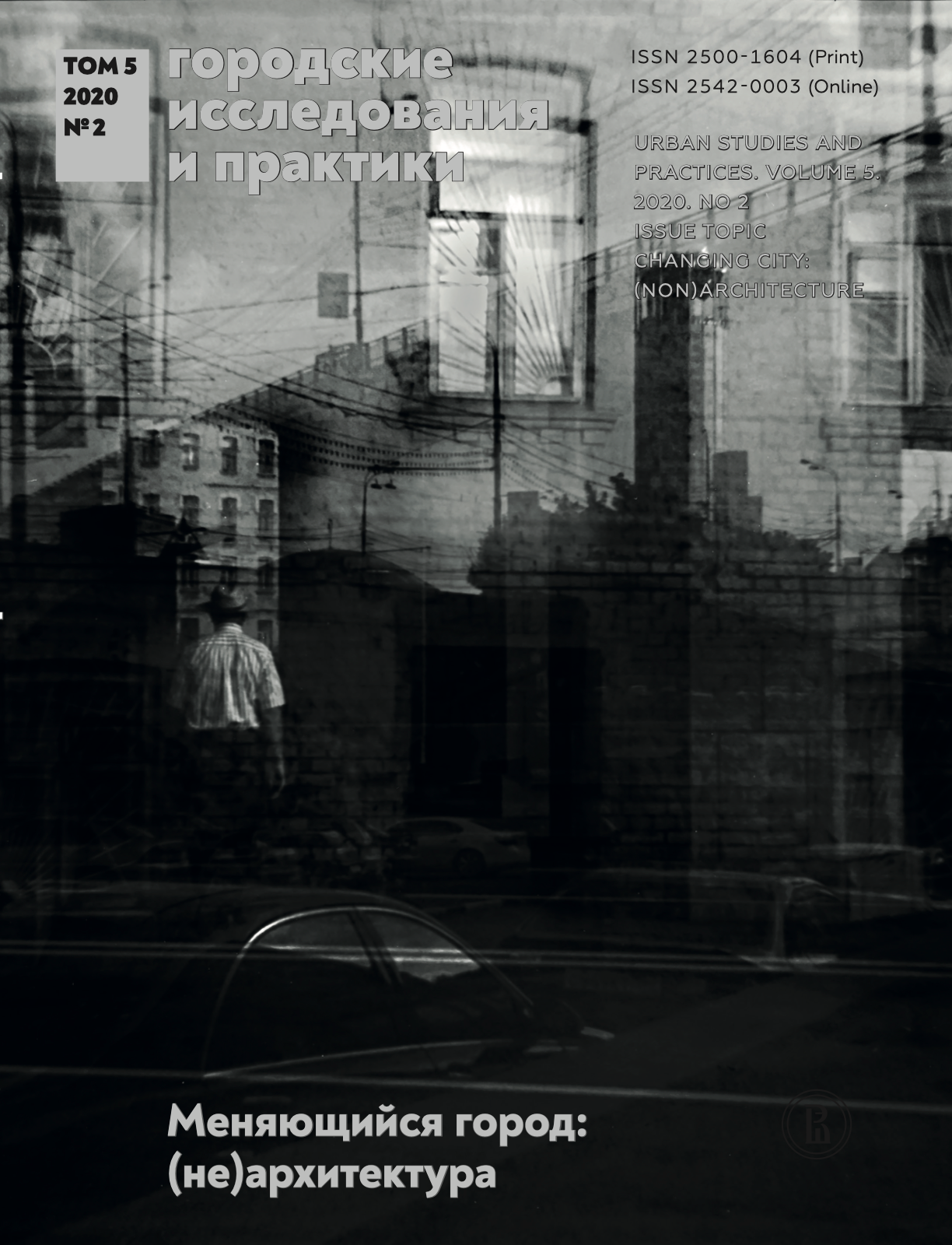Configuring Identities through Industrial Architecture and Urban Planning: Greek Tobacco Warehouses in Late Nineteenth and Early Twentieth Century
Abstract
In the late nineteenth century the city of Kavala, a town by the sea in northern Greece, was developed to one of the most important tobacco processing centers in the Balkan area. Powerful tobacco merchants mainly from the Hapsburg and Ottoman empires built a considerable number of tobacco warehouses thus redefining the center of the city, its character, as well as its borders. I argue that the architecture of those warehouses deeply configured the identities of tobacco workers and provided the means to tobacco merchants to publicly present themselves and their achievements. At the same time those early industrial buildings subverted the boundaries between the city and the factory, shedding light on the work culture and everyday lives of Greece’s tobacco workers.
Downloads
References
Aйбар Э., Бейкер У. (2017) Конструируя город: план Серда по расширению Барселоны // Социология власти. No 29 (1). С. 203–232.
Agriantoni C. (2006) Venizelos and Economic Policy // The Trials of Statesmanship / P. Kitromilides (ed.). Athens: Institute for Hellenic Research — Edinburgh University Press. P. 254–318.
Angeloudi-Zarkada S. (1986a) H Kavala os Kapnoupoli // Techniko Epimelitirio Elladas-Anatolikis Makedonias. Vol. 7. P. 9–14.
Angeloudi-Zarkada S. (1986b) O Neoklasikismos stin Kavala // Techniko Epimelitirio Elladas-Anatolikis Makedonias. Vol. 7. P. 15–22.
Antoniou G. (2006) Oi Ellines MIxanikoi, Thesmoi kai Idees 1900–1940. Athens: Bibliorama.
Avdela E. (1993) O Sosialismos ton Allon: Taxikoi Agones, Ethnotikes Sigkrousis kai Tautotites Filou sti Metaothomaniki Thessaloniki // Ta Istorika. Vol. 18/19. P. 171–204.
Banham R. (1986) A Concrete Atlantis: U.S. Industrial Building and European Modern Architecture, 1900–1925. Cambridge: MIT Press.
Bielman A., Courtois Ch., Ducrey P., Franze B. (2001) Waldemar Deonna (1880–1959) — Paul Collart (1902–1981): Two Swiss Archaeologists Photographing Greece 1904–1939 // Catalogue of an exhibition at Benaki Museum, Athens, March 15 — April 14, 2001. Athens: Benaki Museum.
Biggs L. (1996) The Rational Factory: Architecture, Technology and Work in America’s Age of Mass Production. Baltimore: The Johns Hopkins University Press.
Bijker W., Bijsterveld K. (2000) Women Walking Through Plans: Technology, Democracy and Gender Identity // Technology and Culture. Vol. 41. P. 485–515.
Bijker W. (1995) Of Bicycles, Bakelites and Bulbs: Toward a Theory of Sociotechnical Change. Cambridge, MA: MIT Press.
Bijker W., Hughes T., Pinch Т. (1999) The Social Construction of Technological Systems: New Directions in the Sociology and History of Technology. Cambridge, MA: MIT Press.
Bradley B. (1999) The Works. The Industrial Architecture of the United States. New York: Oxford University Press.
Chatzeiosif Ch. (1986) Apopseis Giro apo ti Viosimotita ths Elladas kai to Rolo tis Viomixanias // Afieroma sto Niko Svorono. Vol. B. P. 330–368.
Grint K., Woolgar S. (1997) The Machine at Work: Technology, Work and Organization. Cambridge: Polity Press.
Hildebrand G. (1974) Designing for Industry: The Architecture of Albert Kahn. Cambridge: MIT Press.
Horowitz R. (1997) “Where Men Will Not Work”: Gender, Power, Space and the Sexual Division of Labor in America’s Meatpacking Industry, 1890–1990 // Technology and Culture. Vol. 38. No. 1. P. 187–213.
Ioannidis I. (1998) To Kapniko stin Kavala. Kavala: Municipal Historical Museum Publications.
Kaplani G. (2004) Tabakothikes: Koutia Kapnou kai Arravona. Athens: Olkos.
Lewis R. (2001) Redesigning the Workplace: The North American Factory in the Interwar Period // Technology and Culture. Vol. 42. P. 665–856.
Lykourinos K. (1997) ‘To Kapnemporio tis Kavalas kai to Ethniko Zitima stis Paramones tou Ethnikou Agona’ // Ypostego, Periodiko Ekfrasis kai Logou. Vol. 8–9. P. 95–133.
Meyer S. (1981) The Five Dollar Day: Labor Management and Social Control in the Ford Motor Company, 1908–1921. Albany: State University of New York Press.
Pegios G. (1984) Apo tin Istoria tou Syndikalistikou Kinhmatos tis Kavalas (1922–1953). Athens: Pedagogical Books Organization. P. 16–17.
Rose M., Tarr J. (1987) Introduction to the Issue on the City and Technology // Journal of Urban History. Vol. 14. P. 3–6.
Slaton A. (2001) Reinforced Concrete and the Modernization of American Building, 1900–1930. Baltimore: The Johns Hopkins University Press.
Stefanidou A. (2007) H Poli Limani tis Kavalas kata tin Periodo tis Tourkokratias. Poleodomiki kai Istoriki Diereunisi. Kavala: Historical and Folklore Museum.
Tarr J. (1979) Introduction to the Issue on the City and Technology // Journal of Urban History. Vol. 5. P. 275–277.
Vyzikas G. (1994) Xroniko ton Kapnergatikon Agonon. Kavala: Kavala Municipal Museum. P. 53–54.
Walker M. A. (1864) Through Macedonia to the Albanian Lakes. London: Chapman-Hall.
Yakoumaki P., Charitatos M. (1997) I Istoria tou Ellinikou. Athens: Greek Literary and Historical Archive.

